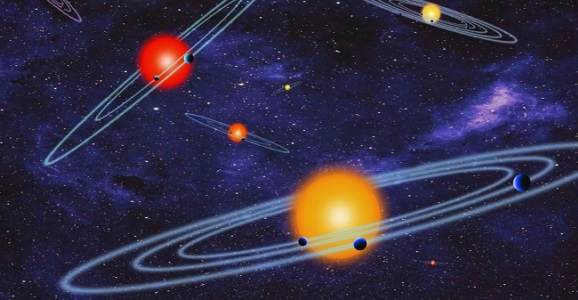NASA Finds 715 New Exoplanets Beneath The Universe’s Couch Cushions
This article is more than 2 years old
 Much like an over-the-hill cinematic boxer, everyone had pretty much given up on the Kepler Telescope once its instruments started to malfunction a while back. Though steps are being taken to give it different duties, there is still a seemingly endless stream of data that Kepler has already provided scientists. Delving through this massive chunk of information astronomers keep finding new things. The latest discovery involves the identification and verification of 715 exoplanets, which is the largest batch of new planets ever found, and brings the total sum up to almost 1,700. I guess I should have started off with a better comparison than Rocky.
Much like an over-the-hill cinematic boxer, everyone had pretty much given up on the Kepler Telescope once its instruments started to malfunction a while back. Though steps are being taken to give it different duties, there is still a seemingly endless stream of data that Kepler has already provided scientists. Delving through this massive chunk of information astronomers keep finding new things. The latest discovery involves the identification and verification of 715 exoplanets, which is the largest batch of new planets ever found, and brings the total sum up to almost 1,700. I guess I should have started off with a better comparison than Rocky.
The research team responsible for this exciting find—led by Jack Lissauer, planetary scientist at NASA‘s Ames Research Center—was analyzing data from May 2009 to March 2011, Kepler’s first two years of operation. They honed their search to only include stars with more than one potential planet, at which point a statistical technique called “verification by multiplicity” was used to determine the probability of planets surrounding those stars. A few thousand of the 150,000 stars observed have confirmed planets orbiting them, and a study of the data revealed that planets are not just randomly or equally distributed, but that some stars are far more likely to have multiple planets than others. And then somebody sprinkled some magic dust on a pair of ancient dice and the number 715 floated in the air above the dice. Or maybe they did something more technical.
Here’s how the NASA article described the process, while the Transit Method sat in the corner glaring angrily at everyone.
This method can be likened to the behavior we know of lions and lionesses. In our imaginary savannah, the lions are the Kepler stars and the lionesses are the planet candidates. The lionesses would sometimes be observed grouped together whereas lions tend to roam on their own. If you see two lions it could be a lion and a lioness or it could be two lions. But if more than two large felines are gathered, then it is very likely to be a lion and his pride. Thus, through multiplicity the lioness can be reliably identified in much the same way multiple planet candidates can be found around the same star.
This “veritable bonanza of new worlds,” as Lissauer calls it, are orbiting a total of 305 stars, and most are smaller than Venus. Four of these planets are two-and-a-half times bigger than Earth and are clearly within their suns’ habitable zones. One of those, which earned the catchy name Kepler-296f, is twice the size of our planet and orbits a star half the size and only 5% as bright as our sun. But no one knows just yet what the planet is composed of.
This is a huge win for NASA, who still has to fight for money to do things that no one else in this country is capable of. And yet we’re perfectly happy to pay money to watch Liam Neeson take down terrorists in a plane. Maybe after checking Non-Stop out, we can find the study when it’s published in the March 10 edition of The Astrophysical Journal.












